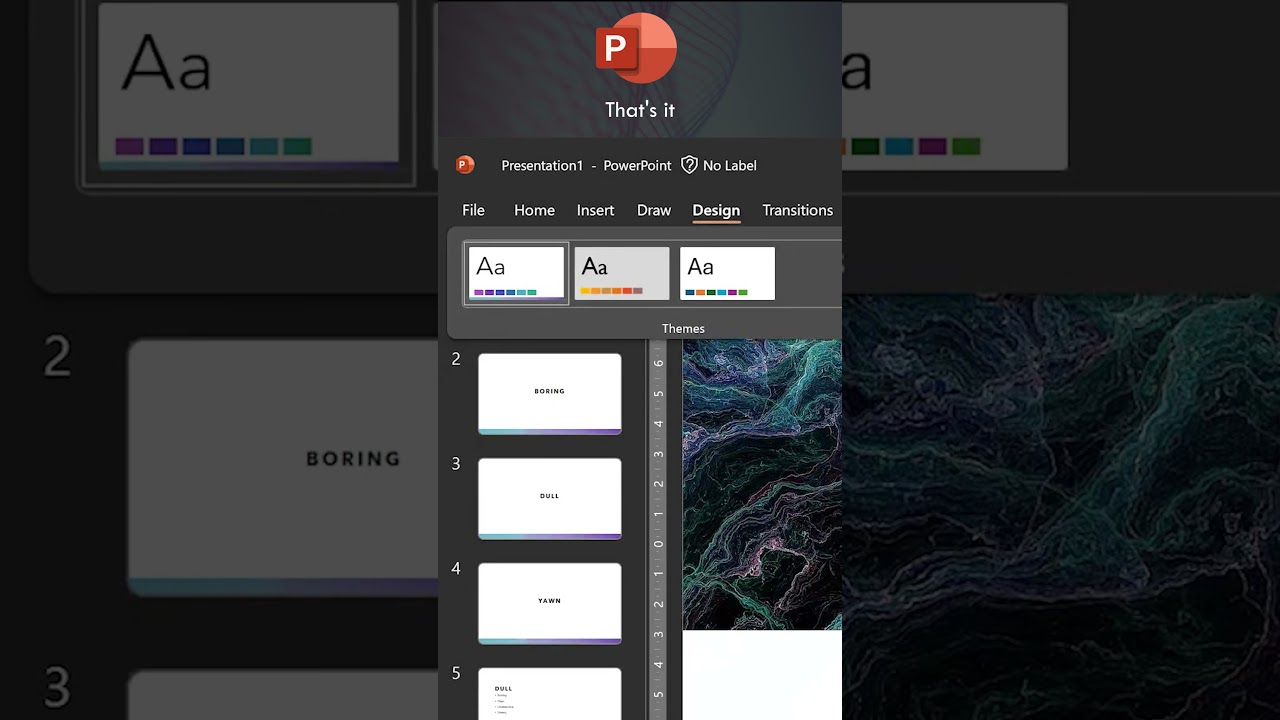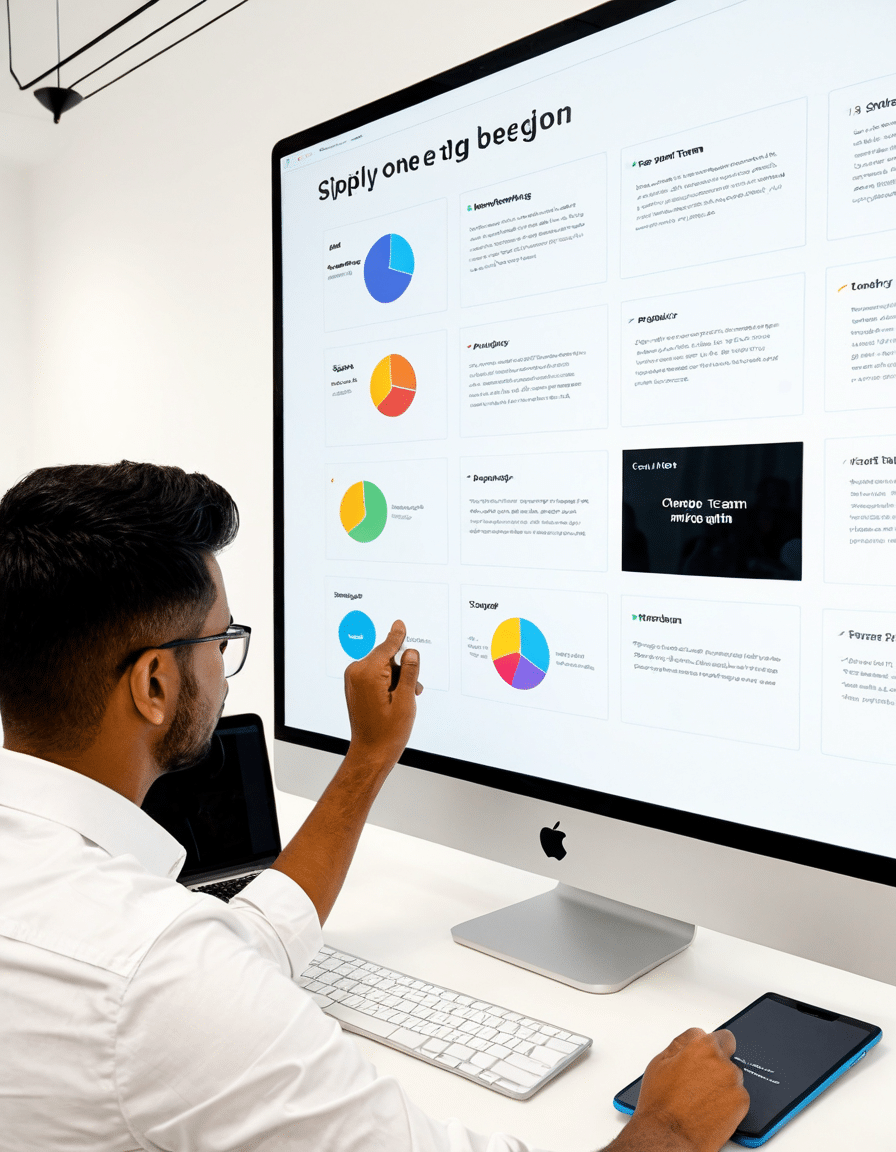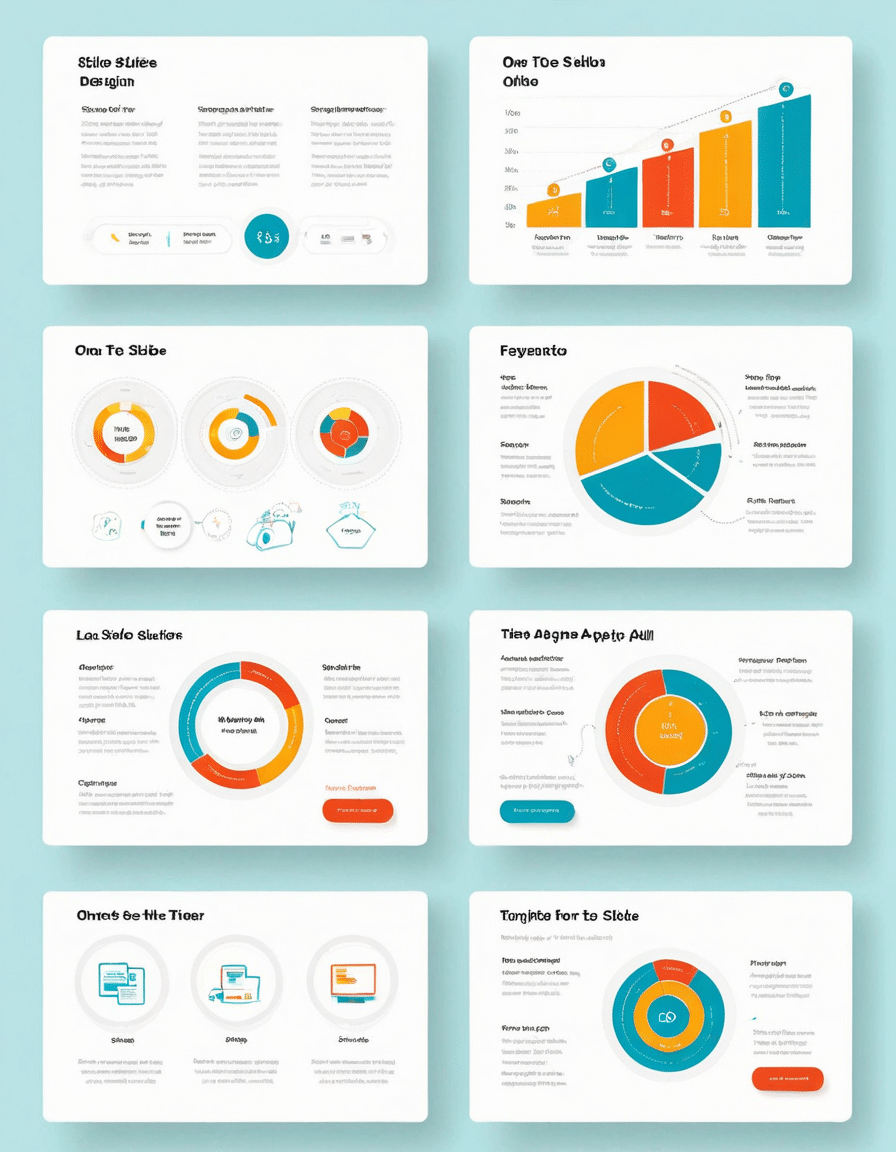Crafting presentations that capture and maintain audience attention is a vital skill in business and speaking. An essential technique in this domain revolves around how to apply one slide design to all slides. Taking this cohesive approach not only fosters consistency but reinforces your branding and helps you focus on content delivery rather than dealing with distracting layout changes during your presentation.
When you effectively apply a single design across all your slides, you create a sense of professionalism that resonates with the audience. Just think of big brands; their messaging becomes powerful simply because they maintain a consistent look. In a world overflowing with noise, you can stand out by presenting a polished and cohesive presentation that echoes your personal brand. Let’s dive into the top seven strategies that can revolutionize your slide design while keeping your audience engaged.

Top 7 Strategies for Effective One Slide Design
Here are seven strategies to ensure your design remains cohesive while amplifying your message:

1. Define Your Core Theme
Before you even begin designing, pinpointing your core theme is crucial. Your theme should encapsulate the essence of what you are trying to share with your audience. Look at how Apple excels at creating a minimalist aesthetic that mirrors their brand philosophy—simplicity and elegance. So, ask yourself: what visual elements align with your theme? Colors, fonts, and imagery should all reflect this core principle.
This step sets the groundwork for everything else. If your core theme feels disconnected, your slides will, too. You might also explore how famous figures, like Camille Cosby, convey strong themes with their presentations, serving as inspiration.
2. Consistent Typography
Next, let’s talk about typography. Choosing consistent fonts elevates readability and brand recognition. Take Netflix, for example; they use Helvetica Neue across all their slides. This attention to detail projects a polished and professional image. When selecting fonts, opt for those that are readable, and pair them wisely to maintain a cohesive look.
Be mindful of the font size and color contrast, ensuring that all audience members, regardless of where they sit, can see your text clearly. This straightforward strategy can be the difference between an audience that retains information and one that drifts away.
3. Strategic Color Palette
A well-thought-out color palette can beautify your slides while reinforcing your message. Brands like Coca-Cola utilize their iconic red consistently to elicit strong emotional responses. When selecting colors, aim to stick with 2-3 primary hues paired with neutral backgrounds. This selection strategy helps your slide design complement important points without overwhelming the audience.
Leverage psychological principles behind colors; different shades can evoke various emotions, making your presentation more impactful. For instance, blues can convey trust, while yellows can energize the space.
4. Utilize Templates
Creating a template might just save you tons of time while ensuring uniformity across your slides. Platforms like Canva offer an array of customizable templates that help users design effective presentations that align with current design trends. It’s a game changer!
These templates not only save time but also provide a framework so your creativity can shine without sacrificing cohesion. Choose templates that resonate with your story while leaving room for individual flair.
5. Effective Visuals
Using visuals effectively can be a real ace in your presentation. They serve to support your message without overwhelming it. Consider TED Talks; presenters, such as Brené Brown, use relevant images and infographics to bolster complex concepts without crowding their slides.
Choose visuals that strike a balance between being informative and aesthetically pleasing. The right mix can enhance retention and engagement significantly. Remember, it’s about demonstrating, not just telling.
6. Cohesive Slide Transitions
How your slides transition plays a pivotal role in the flow of your presentation. Opt for simple transitions that maintain professionalism without becoming a distraction. Companies like Microsoft use smooth fading transitions in their corporate presentations, which keeps the audience’s focus squarely on the message.
Each slide should feel like a natural continuation of the last rather than a jarring leap. This consistency fosters a steady rhythm, keeping your audience engaged from start to finish.
7. Monitoring Audience Engagement
Last but not least, keep an eye on your audience’s reactions. As you master the art of how do you use body movement and posture during your speech, adjusting your tone, speed, and even slide layouts based on engagement cues is vital. A dynamic presenter feels more connected to their audience, making the experience engaging for everyone involved.
For instance, if you notice eyes glazing over, you might change your pace or introduce an interactive element. This high level of awareness keeps your presentation vibrant and responsive.

How a PowerPoint Presentation Should Not Look
Understanding how a PowerPoint presentation should not look is just as important as mastering the ideal design. Cluttered designs, excessive text, and distracting animations can derail your message’s effectiveness. One glaring example: the infamous 2013 Target failed presentation, where poorly designed slides led to a significant disconnect with the audience.
Avoid scenarios where your audience struggles to concentrate on your points, overwhelmed by too much information. Instead, prioritize clarity and simplicity—allow your ideas to shine rather than drowning them in visual noise.
Harnessing Body Movement and Posture
Physical presence matters more than you might think. Effective speakers, like Simon Sinek, leverage body movement to fuel their storytelling dynamism. Purposeful movements emphasize key points and keep audiences engaged. When mastering how do you use body movement and posture during your speech, remember that your presence can significantly enhance your overall message.
Utilizing gestures naturally and maintaining eye contact can draw your audience in, creating a shared experience rather than a one-sided lecture. Think of your body as a tool that communicates just as much as your words do.

Innovating Your Presentations with Cohesive Design
In summary, applying how to apply one slide design to all slides is vital for creating a branded experience that resonates with your audience. When you define core themes, maintain consistent typography, and utilize effective visuals, you foster an inviting atmosphere. As you embark on your presentation journey, don’t forget that your slides are your allies—use them wisely to illuminate your thoughts and ideas.
Whether you’re touring the speaking circuit or trying to elevate your business meetings, a well-crafted, cohesive presentation can elevate your voice above the din. With these strategies, you leave a lasting impression, ensuring your message is heard, understood, and remembered. Transform your speaking career today; the stage is yours to command!

How to Apply One Slide Design to All Slides for Impactful Presentations
Crafting a killer presentation can feel like a ride on a rollercoaster. You’ll want all your slides to have a cohesive style, but how do you pull that off? The trick is simple, really: establish a unified design that echoes throughout your slides. Not only does this keep your audience focused, but it also gives your message a solid backbone. Speaking of focus, did you know that practicing public speaking can significantly reduce stage fright? Check out this public speaking course in London to polish those skills!
Now, let’s dive into how to apply one slide design to all slides. Start with a limited color palette, just like a classic pair of Adidas Spezial sneakers. Pick a few colors that resonate with your brand or theme. Consistent colors can evoke emotions and thoughts, so choose wisely! And if you get jittery thinking about speaking to a crowd, remember, knowing how to get rid of stage fright, like deep breathing or visualizing success, can make all the difference. If you need more tips on that, explore how you can get over stage fright completely.
Next up, think about your font choices. Stick with one or two fonts for the entire presentation. Think of it like the classic Marlboro Light branding—you recognize it instantly because it’s consistent. Large headings and concise bullet points are your best friends. And let’s not forget images! Use visuals that complement your text and design theme. Simple images and even cool Drawings can grab attention without overwhelming your audience.
In short, keeping your slides visually appealing and aligned is key to a memorable presentation. You can’t ignore the impact of a well-structured design. As you hone your skills, consider joining public speaking Classes in Columbus , Ohio. With practice and the right design, you’ll create presentations that resonate long after you’ve left the stage. So, buckle up, get creative, and apply one slide design to all slides for an impactful presentation journey!










